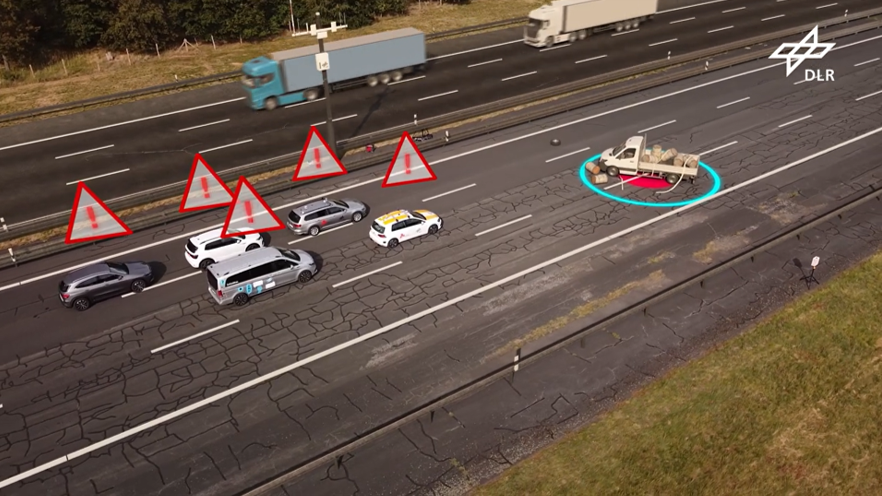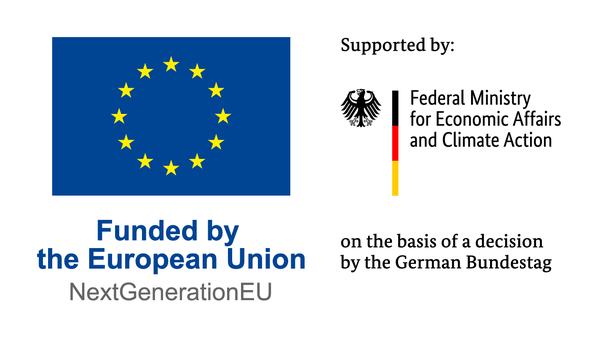Gaia-X 4 AMS
Automated driving will become more important in Europe in the future, but according to the current state of technology, it is only possible within certain application limits, compliance with which must be continuously monitored and ensured. In order to enable widespread use in the future, a wide range of data on the current road and traffic situation is required, as well as solutions for special situations, e.g. deployment of emergency services. A key prerequisite for this is that the data used is transmitted securely, robustly and reliably and comes from trustworthy sources. Gaia-X offers an ideal starting point for this, as it enables trustworthy, decentralised data ecosystems.
As part of the Gaia-X 4 AMS project, a Gaia-X-compliant mobility service is being developed that provides an ODD-compatible route for the journey depending on the vehicle's own automation limits and current conditions in the real world (e.g. road conditions and traffic situation). Information from the automated vehicle, intelligent infrastructure and mobile camera sensors, among other things, is used for routing. The aim here is to adapt the suggested route if necessary – even during the journey – so that the journey can be automated by the vehicle over as much of the route as possible and with the greatest possible probability. This service plays a particularly important role in higher levels of automation, where drivers do not have to constantly monitor the system and can therefore pursue other activities. The mobility service is being developed and prototypically demonstrated in the project.

On the other hand, Gaia-X 4 AMS focusses on special situations that occur during firefighting operations. The project is developing a networked rescue corridor. This increases safety when driving to the scene of an emergency by automatically forming rescue lanes, sending warning messages to road users and prioritising the emergency services at signalised junctions. In addition, the emergency services are supported by live images from a drone during the initial investigation of the scene. The project integrates existing individual solutions and develops and demonstrates prototypes of the required services using the Gaia-X ecosystem.

The Gaia-X 4 AMS project is gathering practical experience in the utilisation of Gaia-X for mobility applications. The project results primarily support automated driving by integrating numerous external data sources in order to make it more robust and to be able to react appropriately in special situations. In addition, the project generally networks various stakeholders such as emergency services, mobility service providers and public institutions in a shared prototype data space. Gaia-X 4 AMS thus lays the foundation for the data originally provided in the data room for other purposes, e.g. from drone cameras, infrastructure and vehicle sensors, to be used for the development of further services in the future. For example, environmental authorities could use measurement data for environmental monitoring and land registry offices could utilise aerial images or improve traffic management by providing information on fire brigade operations. The provision and networking of diverse data sets is the basis for further technological and economic innovations in the field of mobility.

The Gaia-X 4 AMS project – Gaia-X for safe autonomous driving and improved rescue mobility
Your consent to the storage of data ('cookies') is required for the playback of this video on Youtube.com. You can view and change your current data storage settings at any time under privacy.
Project title:
Gaia-X 4 AMS – Gaia-X 4 Advanced Mobility Services
Duration:
12/2021 to 05/2025
Project participants:
AFUSOFT Kommunikationstechnik GmbH
Altran Deutschland S.A.S. & Co. KG
Bernard Technologies GmbH
Christoph Kroschke GmbH
consider it GmbH
Conti Temic microelectronic GmbH
German Aerospace Center e.V. (DLR)
Elektra Solar GmbH
Fraunhofer-Gesellschaft e.V.
- Institute for Production Systems and Design Technology IPK, Berlin
- Institute for Transportation and Infrastructure Systems IVI, Dresden
- Institute for Applied Information Technology FIT, Sankt Augustin
- Institute for Software and Systems Engineering ISST, Dortmund
Institute for Automation and Communication e.V.
OECON Products & Services GmbH
Peregrine Technologies GmbH
City of Brunswick – Fire department Brunswick
Software AG
T-Systems International GmbH
Technische Hochschule Ingolstadt
Central Office for Information Technology in the Security Sector
htw saar, Forschungsgruppe Verkehrstelematik
Zeppelin University, Chair of Mobility, Trade & Logistics und Center for Mobility Studies



